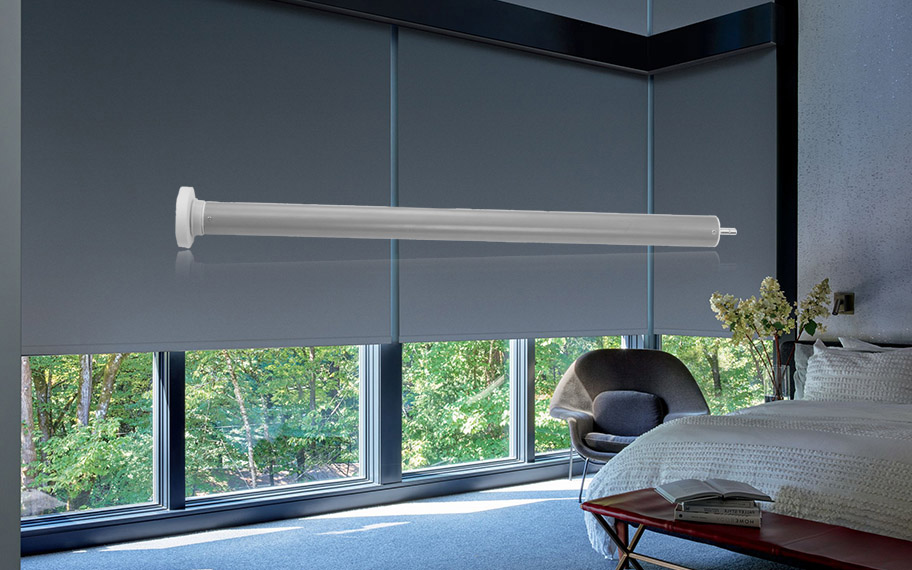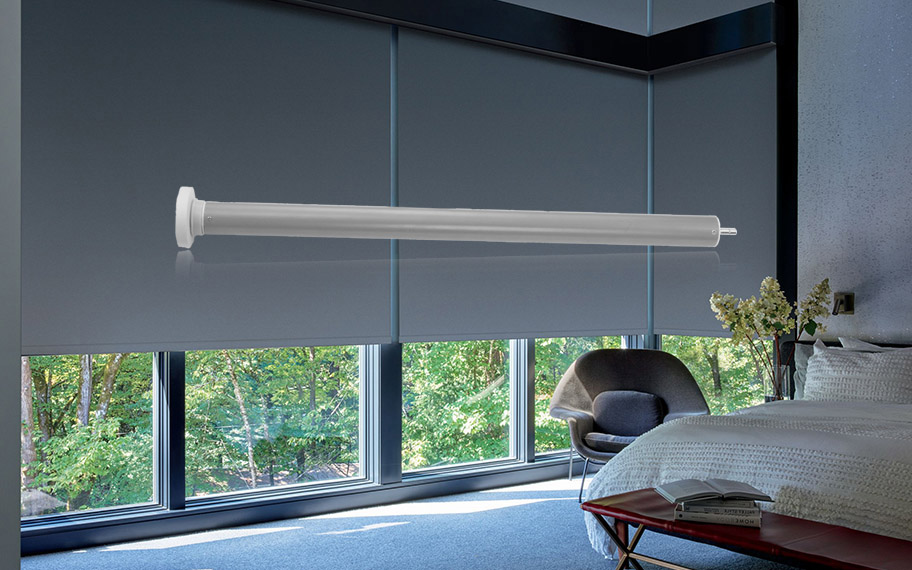Motorized Roller Blinds — Enhancing Light, Comfort & Efficiency
Introduction
Blinds have always been more than just window decoration — they provide light control, privacy, and contribute to a room’s ambiance. Today, motorized roller blinds bring those functions to a new level: combining automation, precision, safety, and energy savings. Whether for homes, offices, or commercial spaces, motorized blinds are quickly becoming an essential upgrade.
Why Motorize Your Roller Blinds?
- Precision in Light and Shade Control
With motorized blinds, you can adjust light levels smoothly. Schedule them to rise at sunrise, descend during peak daylight, or react to sunlight sensors — giving you control over glare, interior temperature, and mood. - Convenience & Accessibility
Gone are the days of pulling cords, adjusting manually, or reaching for remote rods. Especially in hard-to-reach windows or for users with reduced mobility, motorized systems make operation effortless. - Safety First
Cords pose risks, especially for young children or pets. Motorized systems eliminate dangling cords and replace them with remote, wall switch or even app-based control. Also, electronic limit switches prevent overrun and mechanical damage. - Energy Efficiency & Climate Comfort
Automated blinds help manage solar heat gain in summer and retain warmth in winter. By closing blinds during midday in hot climates or opening them in winter sunlight, you reduce fluctuation in indoor temperature and cut down HVAC costs. - Aesthetic & Property Value Boost
Sleek roller blinds with hidden motors and clean lines add to the modern look of interiors. Buyers and renters often see motorized features as luxury upgrades that enhance both functionality and perceived value.
Key Factors in Choosing Motorized Roller Blinds
| Factor | Why It Matters |
|---|---|
| Blind Weight & Size | The size and material of the blind determine how much torque the motor needs. Heavier fabrics or large width require stronger motors. |
| Tube Diameter & Mounting Space | Motor must fit inside the roller tube or into the head rail. Slim motors require smaller tube diameter; ensure compatibility. |
| Motor Type & Control | Options include tubular motors, parallel motors, DC motors; control via wall switches, remote, app, sensors. Choose what fits your usage pattern. |
| Limit Switch Type | Electronic limit switches allow precise end-stop settings, smoother operation and longer lifespan compared to mechanical stops. |
| Power Supply & Wiring | Mains power vs low voltage, battery-operated, solar powered: each has pros and trade-offs (installation complexity, maintenance, location). |
| Operating Speed & Noise | Fast response and low noise make a big difference in bedroom or living room setups. You want smooth and quiet. |
| Safety Regulations | Child safety, cord-free operation, certifications (CE, UL etc.) may be legally required depending on region. |
Technical Considerations & Formulas
To choose the right motor for a roller blind, you often estimate torque requirement based on the blind size, weight, tube diameter, and mounting.
- Torque (Nm) ≈ (Weight of fabric [kg] × radius of roller tube [m]) × friction coefficient
- Always select a motor with a safety margin — 20-30% more torque than the calculated minimum.
Additional specs to check:
- Operating voltage
- Thermal protection / duty cycle (continuous vs intermittent use)
- IP rating (if installed near windows exposed to moisture)
- Certifications and warranty
Advantages of Motorized Roller Blinds with Modern Motor & Controls
- Automated Timers & Smart Integration: Link blinds to sunrise/sunset, thermostats or light sensors.
- Voice Control & Remote Access: Use voice assistants or smartphone apps for hands-free control.
- Preset Scenes: e.g., “Movie mode” lowers blinds, dims lighting; “Morning mode” opens blinds incrementally.
- Minimal Maintenance: Motor and electronic limit switches reduce the wear and tear of manual components.
Challenges & What to Look Out For
- Cost Upfront: Motorized setups are pricier; planning budget is important.
- Power & Wiring Logistics: Retrofitting may require running cables or planning battery/solar powered options.
- Motor Lifespan & Warranty: Quality motors with proper protection last longer; buy from reputable manufacturers.
- Compatibility of Fabric & Mounts: Heavy or thick fabrics need proper tube structure; mounting brackets must support the weight.
Case Study / Sizing Example
Suppose you have a window that is 2.5 m wide and you choose a blackout fabric that weighs 0.45 kg/m². The roller tube has a radius of 0.05 m.
- Fabric area = 2.5 m × drop height (say 2.0 m) = 5.0 m²
- Fabric weight = 5.0 m² × 0.45 kg/m² = 2.25 kg
- Torque needed ≈ weight × radius = 2.25 kg × 0.05 m = ~0.1125 kg·m → converting to Nm (× 9.81) gives ~1.10 Nm, plus friction and safety margin → you might choose a motor with 1.5–2.0 Nm or higher.
This example shows even “large” windows often need modest torque — but if you use heavier fabric, thicker mounts, or wider spans, torque needs scale up.
Conclusion
Motorized roller blinds combine elegance, control, safety, and savings. By selecting the right motor (torque, control, limit switch), fabric, and control system, you can transform windows from static features into automated, energy-smart elements of your home or workplace. When planned well, the benefits — convenience, comfort, and efficiency — are well worth the investment




